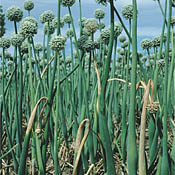By Kisha Shelton,
Plant Pathology Department, University of Georgia
Welcome to 2001, a time of technology running rampant. At times, it is almost too much for a person to handle. But this technology can make a teacher's life a little simpler. Today we can find just about any kind of information with a computer mouse and the click of a few buttons. Many universities, companies and individuals have put together some very interesting and informative websites.
"Bt corn", "Round-up Ready Soybean" and "GMO" (genetically modified organisms) are words thrown around in the media lately as if everyone knows exactly what they mean. Do you know? Do your students know what they are and how they affect our lives? Now there is help for those wanting to understand the controversy behind GMOs. The Council for Biotechnology Information (http://whybiotech.com) has created a site that offers information regarding the definitions, the benefits, and the regulation of biotechnology. It also includes a resource center with up to date articles found nationally and internationally. There is even a links page offering an extensive list of other organizations that supply biotechnology information.
Are you looking for hands-on activities to explain biotechnology to your students? Then check out the web site created by the Office of Biotechnology at Iowa State University (http://www.biotech.iastate.edu) . This site is for teachers looking for ways to spice up their biological science laboratories. The Educational Resources section of this site boasts a list of classroom lab activities, biotechnology curriculum units (ranging from grades 4-12), a look at bioethics case studies, a list of Educational funding sources, and an extensive list of biotechnology educational resources in the web sites section.
If biotechnology is not the subject you are looking for, there are many other sites available with fun activities. The Plants, Pathogens, and People–An Agricultural Awareness Site (University of Illinois at Urbana-Champaign) (http://www.ppp.uiuc.edu) has two interactive laboratory and classroom sections for instruction on two of the more famous plant diseases: Late Blight of Potato and Dutch Elm Disease. How about learning a little about the history of Plant Pathology, check out the Plant Pathology Laboratory (http://www.plant.uga.edu/labrat/). This web site has a historical time line located in the student playground section. More sections concerning world disease problems and laboratory experiments will be added to this site soon. A site called Access Excellence is offered by the National Health Museum (http://www.accessexcellence.com) and offers some problems to help students with cognitive learning by solving mysteries involving the strange death of frogs, the illness of a child etc. These and other mysteries can be found in the Activities Exchange Mystery Spot.
A great mycology web site is Tom Volk's Fungi (http://botit.botany.wisc.edu/toms_fungi/) which includes a "fungus of the month" and a collection of great images. If you would like the opportunity to learn more about individual pathogens in plant pathology then check out the Plant Pathology Internet Guidebook (http://www.pk.uni-bonn.de/ppigb/ppigb.htm) for a listing of the generalexist are almost overwhelming, but hopefully this article has provided you with some new places to obtain information. If you would like to share a good website with other teachers, please contact me by e-mail (kshelton@arches.uga.edu). We will add it to the list in the K-12 Resource Catalog in this website along with other useful resources. plant pathology subjects and much more. The Texas Extension Plant Pathologists have prepared an online Texas Plant Disease Handbook (http://plantpathology.tamu.edu/texlabn/notice.html). This handbook has a lot of information about different diseases on different crops. You should also check university websites in your own state for listings such as this because many will have something similar about your local diseases.
The websites that exist are almost overwhelming, but hopefully this article has provided you with some new places to obtain information. If you would like to share a good website with other teachers, please contact me by e-mail (kshelton@arches.uga.edu). We will add it to the list in the K-12 Resource Catalog in this website along with other useful resources.
 |
Views: Recent outbreaks of citrus canker in lime groves in the Miami, Florida area have been reported by the news media. Although the disease is not a health threat to humans, it is of great concern to the citrus industry. Click here for more information.
|
